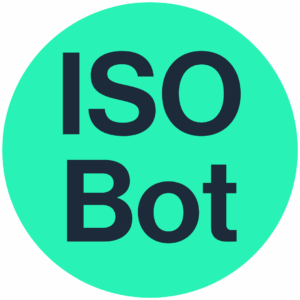Disclaimer: This blog post, which answers “How does ERCOT’s interconnection process differ for behind-the-meter projects vs. grid-connected projects?,” was generated using PCI’s ISO/RTO Documentation AI Chatbot, powered by ChatGPT. While the content is based on curated market documentation, it is intended for informational purposes only and may not reflect the most up-to-date or comprehensive information. We recommend verifying any key details directly with relevant sources before making business decisions.
For the latest answer to this question, generated live, visit our free ISO/RTO Documentation Chatbot.
Navigating ERCOT’s interconnection process can be complex, especially when comparing behind-the-meter (BTM) projects to grid-connected resources. These two types of projects follow distinct paths, with unique interconnection requirements, regulatory obligations, and market participation rules. Understanding these differences is crucial for developers aiming to optimize project timelines, permitting, and revenue opportunities.
In this blog post, we’ll explore the key distinctions between BTM and grid-connected projects in ERCOT. We’ll break down how interconnection requirements vary, the regulatory hurdles each type of project faces, and how these factors shape market participation and revenue potential.
ISO/RTO Documentation Chatbot
Use our AI to search Business Practice Manuals from ISO/RTO markets at no cost.
How ERCOT defines behind-the-meter and grid-connected projects
ERCOT categorizes projects based on their physical and operational connection to the grid. Behind-the-meter (BTM) projects are located on the customer’s side of the meter, primarily serving on-site load. These projects often include distributed energy resources (DERs) like rooftop solar, battery storage, or combined heat and power (CHP) systems.
Grid-connected projects, on the other hand, are directly tied to the ERCOT transmission or distribution system. These resources, such as utility-scale solar farms, wind turbines, and large battery storage systems, are designed to inject power into the grid and participate in ERCOT’s wholesale markets.
Interconnection requirements: what sets BTM apart from grid-connected
The interconnection process for BTM projects is generally less rigorous than for grid-connected resources. BTM projects don’t require the same level of coordination with ERCOT because they’re not injecting power into the grid. Instead, they must comply with local utility interconnection standards, which vary by service area.
Grid-connected projects, however, must navigate ERCOT’s formal interconnection process. This involves submitting an interconnection request, undergoing a detailed study process, and signing agreements with Transmission Service Providers (TSPs). ERCOT evaluates these projects to ensure they won’t compromise grid reliability or require significant transmission upgrades.
For example, ERCOT’s generation interconnection process includes a series of studies to assess the impact of new resources on the transmission system. These studies identify necessary upgrades and ensure the project aligns with ERCOT’s planning and operational standards.
Regulatory obligations: local vs. state-level oversight
BTM projects are typically subject to local regulations and utility-specific requirements. Developers must work closely with local utilities to meet interconnection standards, permitting requirements, and safety protocols. These projects often avoid state-level regulatory oversight, streamlining the development process.
Grid-connected projects, however, face more stringent regulatory obligations. Developers must register with ERCOT as Resource Entities and comply with the Public Utility Commission of Texas (PUCT) rules. This includes meeting telemetry, metering, and operational requirements to participate in ERCOT’s wholesale markets.
Market participation rules: limited vs. full access
BTM projects have limited access to ERCOT’s wholesale markets. Since they primarily serve on-site load, they don’t typically participate in energy, ancillary services, or capacity markets. However, some BTM resources can enroll in demand response programs or provide grid services through aggregators.
Grid-connected projects enjoy full access to ERCOT’s wholesale markets. They can sell energy, offer ancillary services, and participate in the Day-Ahead Market (DAM) and Real-Time Market (RTM). This broader market access creates more revenue opportunities but also requires compliance with ERCOT’s market rules and protocols.
How these differences impact project development and revenue
The contrasting interconnection and regulatory frameworks for BTM and grid-connected projects significantly influence project timelines, permitting, and revenue potential.
BTM projects benefit from shorter development timelines and lower permitting costs. Their focus on serving on-site load reduces the need for extensive studies or transmission upgrades. However, their revenue opportunities are limited to cost savings and participation in demand response programs.
Grid-connected projects, while offering greater revenue potential, face longer development timelines and higher upfront costs. The need for ERCOT interconnection studies, transmission upgrades, and compliance with market rules adds complexity to the development process. Yet, these projects can generate revenue through energy sales, ancillary services, and market participation, making them attractive for large-scale developers.
Key takeaways for developers
Understanding the differences between BTM and grid-connected projects in ERCOT is essential for successful project development. BTM projects offer streamlined interconnection and regulatory processes but limited market access. Grid-connected resources, while more complex to develop, unlock broader revenue opportunities through full market participation.
By aligning project goals with ERCOT’s interconnection and market rules, developers can navigate these challenges and capitalize on the unique opportunities each project type offers. Whether you’re pursuing a BTM or grid-connected project, careful planning and a clear understanding of ERCOT’s requirements will set you up for success.
For the latest answer to this question, generated live, visit our free ISO/RTO Documentation Chatbot.







